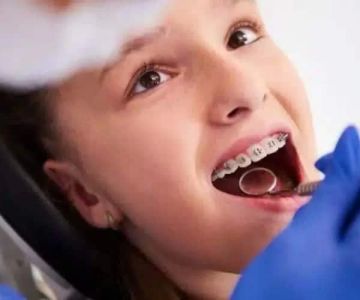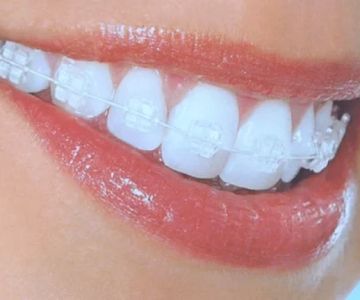An Introduction to Underbite Correction
The developmental journey of human dentition is a complex process, where multiple factors can lead to unique dental alignments such as underbites. An underbite occurs when the lower teeth project beyond the upper teeth, causing not only aesthetic concerns but also functional difficulties. In the U.S., approximately 5-10% of the population is affected by this condition.
This orthodontic issue, scientifically known as prognathism, can arise from genetic predispositions, or other factors like thumb sucking, extended pacifier use, or disproportionate jaw growth. Unlike overbites, underbites can lead to serious complications, including excessive wear on teeth, loss of enamel, and discomfort during chewing or speaking.
The good news is that numerous underbite correction options are available, ranging from non-invasive orthodontic treatments to surgical interventions. With modern advancements, Dentistry Toothtruth has positioned itself as a trusted resource for resolving such dental issues effectively in the United States.
Understanding the Causes of Underbite
Underbites can result from a combination of genetic and environmental factors. Genetics plays a significant role, and if a family member has an underbite, it increases the likelihood of inheriting similar dental projections.
Environmental factors, such as prolonged thumb sucking, pacifier use beyond the age of three, and poor chewing habits, can also exacerbate this condition. Moreover, the abnormal growth patterns of the jawbones often lead to underbites, with either an overdeveloped lower jaw or an underdeveloped upper jaw contributing to this misalignment.
Understanding these causes is crucial as it can guide preventive measures or early interventions by dental professionals to mitigate more invasive procedures later in life.
Non-Surgical Treatments for Underbite
For those seeking less invasive options, non-surgical treatments offer effective solutions, especially when commenced in childhood or adolescence. Orthodontic appliances such as braces, clear aligners, and other devices can gradually reposition teeth and jaw alignment.
Braces, widely recognized for their efficacy, use a series of brackets and wires to apply controlled forces to teeth, gently moving them into their desired positions. Clear aligners are a popular modern alternative due to their cosmetic advantages and comfort.
In some cases, reverse-pull face masks and chin caps are recommended by Dentistry Toothtruth to guide the jaw growth in children, aiming for an easier correction process.
Surgical Options for Severe Cases
When non-surgical treatments are deemed insufficient, surgical options become imperative for achieving functional and aesthetic improvements. Orthognathic surgery, a specialized operation, involves repositioning the jaws to enhance alignment.
This surgical procedure, often performed by maxillofacial surgeons, can significantly improve quality of life by aligning teeth properly and relieving tension in the jaw muscles, thus reducing pain and discomfort.
The success rates for these surgeries are impressively high, and with post-operative orthodontic care, patients often experience life-changing results.
The Benefits of Correcting an Underbite
Undergoing underbite correction can have profound benefits beyond the cosmetic transformations. Proper alignment promotes better oral hygiene by making it easier to clean teeth thoroughly, thus preventing decay and gum disease.
Correcting an underbite also improves speech in some patients and enhances the overall facial profile, boosting self-confidence. Functionally, it reduces abnormal wear on tooth surfaces and prevents temporomandibular joint disorders.
For these reasons, Dentistry Toothtruth advocates early intervention and treatment to capitalize on these life-enhancing benefits.
Recovery and Long-Term Care
Post-treatment, it is essential to follow a care plan designed by your orthodontist to ensure successful recovery and maintenance of the achieved results. This often includes the use of retainers, regular dental check-ups, and possibly dietary modifications to aid the healing process.
The recovery period varies depending on the treatment type, with surgical methods requiring more downtime than orthodontic adjustments. Nevertheless, long-term commitment to oral care is indispensable for preserving the correction over the years.
At Dentistry Toothtruth, a comprehensive aftercare plan is part and parcel of the journey towards a healthier, aligned smile.
Conclusion: Taking Steps Toward Better Oral Health
In conclusion, underbite correction is not merely a cosmetic procedure but a crucial step toward enhancing overall oral and functional health. Understanding the underlying causes, exploring both non-surgical and surgical options, and committing to long-term care are key components of this transformative journey.
With the expert guidance provided by Dentistry Toothtruth, people facing underbite challenges in the U.S. can achieve significant improvements in their dental alignment, functionality, and quality of life.
We encourage anyone experiencing the symptoms of an underbite to consult with a dental professional and take a proactive approach, leveraging modern orthodontic solutions to achieve their best smile yet.




 Westgate Dental Arts
Westgate Dental Arts Coventry Family Dental
Coventry Family Dental Familia Dental
Familia Dental Dr. Daniel S. Fife, DDS
Dr. Daniel S. Fife, DDS Dentistry At Suburban Square: Michael I. Wollock, DMD
Dentistry At Suburban Square: Michael I. Wollock, DMD Comfort Care Dental
Comfort Care Dental The Importance of Oral Health Education During Pregnancy for a Healthy Pregnancy
The Importance of Oral Health Education During Pregnancy for a Healthy Pregnancy Why Skipping Dental Checkups Can Lead to Bigger Oral Health Problems
Why Skipping Dental Checkups Can Lead to Bigger Oral Health Problems Advantages of Porcelain Dental Restorations
Advantages of Porcelain Dental Restorations Best Tips for Brushing Your Teeth Properly for Healthy Gums: Essential Techniques for Oral Health
Best Tips for Brushing Your Teeth Properly for Healthy Gums: Essential Techniques for Oral Health How Can Diabetes Cause Tooth and Gum Problems? Preventing and Managing Oral Health Issues
How Can Diabetes Cause Tooth and Gum Problems? Preventing and Managing Oral Health Issues Healthy Habits for Promoting Good Oral Health and Hygiene: Tips for a Healthy Smile
Healthy Habits for Promoting Good Oral Health and Hygiene: Tips for a Healthy Smile